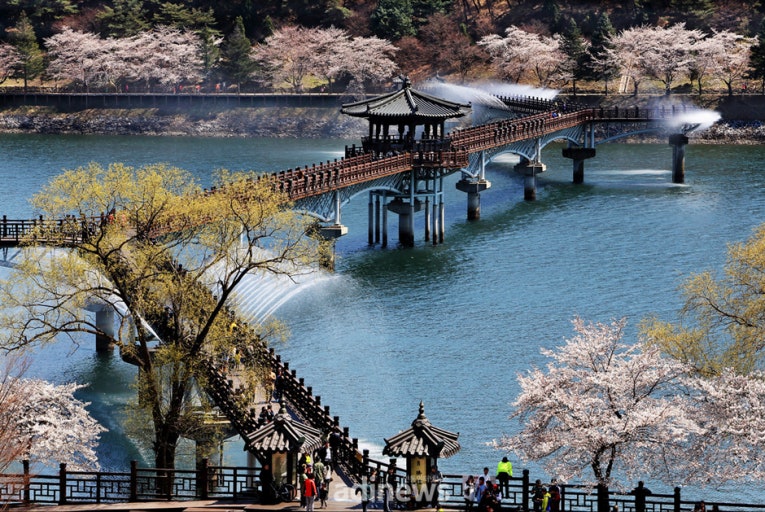Discovering Andong: The Heartbeat of Korean Tradition
Nestled in the verdant hills of North Gyeongsang Province, Andong stands as a living testament to Korea’s cultural heritage. Often hailed as the “Capital of Korean Spirit,” this city seamlessly bridges the past and present, preserving centuries-old customs while embracing modernity. From its iconic mask dance festivals to the time-honored Confucian academies, Andong offers a rare glimpse into the soul of traditional Korea. But what makes this city truly unique is its unwavering commitment to safeguarding intangible heritage—a quality that has earned it UNESCO recognition. This article delves into Andong’s cultural treasures, culinary legacy, and the delicate balance it strikes between preservation and progress. Prepare to embark on a journey through a place where history breathes and traditions thrive.
The Mask Dance Festival: A Symphony of Satire and Spirituality
Andong’s International Mask Dance Festival is a vibrant celebration of Korea’s folk traditions. Rooted in shamanistic rituals, the performances blend satire, dance, and music to critique social hierarchies and celebrate communal harmony. The iconic Hahoe masks—carved from alder wood and painted in bold hues—symbolize characters like the arrogant aristocrat or the cunning butcher, offering timeless commentary on human nature. Beyond entertainment, the festival serves as a cultural dialogue, with troupes from across Asia sharing their mask traditions. This annual event not only attracts global audiences but also revitalizes interest in endangered art forms, ensuring their survival for future generations.
Culinary Legacy: From Royal Cuisine to Homegrown Flavors
Andong’s gastronomy is a feast for both palate and soul. The city is famed for Andong jjimdak, a savory braised chicken dish simmered with soy sauce, vegetables, and glass noodles—a recipe born from 19th-century market culture. Equally iconic is Andong soju, a clear distilled liquor aged in traditional jars, embodying the patience of Korean craftsmanship. For a taste of royal heritage, heotjesabap (fake ritual rice) offers a vegetarian twist on ancestral rites food. These dishes are more than meals; they are narratives of resilience, adaptation, and identity, preserved through family recipes and communal feasts that bind generations.
Hahoe Folk Village: Where Time Stands Still
A UNESCO World Heritage site, Hahoe Village is a meticulously preserved Joseon-era enclave. Clustered tiled-roof homes and thatched cottages line the Nakdong River, framed by lush pine forests. The village’s layout—designed according to Confucian principles and geomantic beliefs—reflects harmony between humanity and nature. Key highlights include:
- Buyongdae Cliff: A panoramic viewpoint revered by scholars for inspiration
- Yangjin Manor: A 600-year-old residence showcasing aristocratic architecture
- Seowon Academies: Confucian schools where literati debated philosophy
Hahoe isn’t a museum but a living community, where residents maintain ancestral rites and farming practices, offering visitors an authentic slice of pre-industrial Korea.
Preserving Heritage in a Modern World
Andong faces the universal challenge of balancing preservation with progress. While high-tech museums digitize mask dance archives, master artisans still hand-carve masks using ancient techniques. The city’s youth engage in innovative projects, like fusion mask performances blending K-pop and tradition. Meanwhile, Confucian scholars collaborate with universities to reinterpret classical texts for contemporary ethics. This duality—honoring roots while nurturing innovation—positions Andong not as a relic but as a model for cultural sustainability. Its success lies in community-led initiatives, where elders and innovators co-create strategies to keep heritage relevant.
Conclusion: Andong’s Enduring Dance with Time
Andong emerges not merely as a guardian of tradition but as a dynamic curator of cultural evolution. Through its mask dances, culinary arts, and historic villages, the city demonstrates that heritage is not static but a living, adaptable force. Its ability to weave ancient rituals into modern life—whether through festivals that draw global crowds or reinterpreted Confucian values—reveals a profound truth: culture thrives when it resonates with changing times. For travelers and scholars alike, Andong offers more than nostalgia; it provides a blueprint for sustaining identity in an interconnected world. As the city continues its delicate dance between past and future, it invites us all to reflect on what we preserve—and why it matters.
